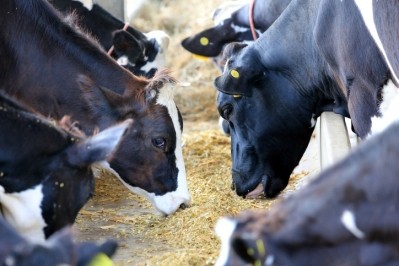Canada saw soybean exports to China more than triple

The US Department of Agriculture (USDA) released an update on soybean production in Canada in a set of agricultural specialists’ reports at the end of last week, along with a report on the feed and agricultural trade between Canada and the US.
During the first part of the 2018/19 marketing year (MY), the USDSA noted that Canada saw soybean exports to China more than triple.
“Total soybean production decreased by 13% in MY 2018/19, despite record production in Ontario, as area planted declined in Manitoba and Saskatchewan,” the specialist said. “Soybean exports to China increased by 230% through the first half of MY 2018/19, supported by the Ontario crop, high carryover stocks, and Eastern Canadian access to US soybean imports.”
Total production of oilseed meals is forecast to grow by about 5% in MY 2018/19, he said. “While soybean meal exports to the US were down at the start of MY 2018/19, exports to Europe were all well ahead of MY 2017/18, resulting in 96% growth in exports through the start of the marketing year,” he added.
Canola in Canada
On the production side, canola planting in Canada is anticipated to increase in 2019/20, said the agricultural specialist.
“Chinese demand for canola meal has been growing, and nearly 30% of Canada’s canola meal exports went to China in MY 2017/18,” he said. “Exports through the first half of MY 2018/19 reflected MY 2017/18 trade flows, with Canada sending 30% of total canola meal exports to China and 70% to the US.”
The area planted in canola is expected to increase by about 1% in marketing year 2019/20, the specialist said.
Despite volatility in the trade outlook for oilseeds, canola is forecast to be profitable relative to other crops.
Total area planted in canola is expected to be about 9.3m hectares in MY 2019/20, he said.
Trade tensions
However, ongoing disease challenge from clubroot is predicted to reduce yields and uncertainty in international trade for the feed ingredient continues.
Starting in December 2018 when Canada detained a Chinese corporate executive, canola shipments to China have reportedly faced “additional testing and delays,” he said. “The Chinese decision in early 2019 to delist a major Canadian canola exporter following allegations of infestation has ratcheted up trade tensions.”
Trade uncertainty may reduce the area planted, but confidence in the global demand for canola meal and oil is anticipated to mitigate that pressure, the specialist said.
“Canadian canola production in MY 2018/19 fell 5% to 20.3m [metric tons] MMT,” he said. “The decrease was due to area planted decreasing from 9.3m hectares to 9.2m hectares (down 1%) and prolonged periods of dryness throughout July and August leading to lower yields.”
Although both planted area and production dropped in MY 2018/19, the increase in beginning stocks from MY 2017/18 meant total supply in 2018/19 was similar to the earlier marketing year, he said.
The quality of the canola crop fell slightly in MY 2018/19 based on the five-year average, the specialist said. About 75% of the harvested canola was graded at being ‘number 1,’ down from the average of 92%.
“Much of the canola harvested after the early fall rain and snowfall that swept across the prairies from Alberta to Manitoba required extra aeration and drying,” he said. “Green seed issues affected some of the later seeded canola, while other areas faced higher incidence of seeds that were distinctly shrunken or shriveled, covered with mold or rime, or excessively weathered and potentially sprouted.”
Canada depends on export markets as about 50-60% of the canola produced is exported, he said. In the first half of 2018/19, canola exports dropped 14% as importers like Pakistan opted for soybeans.
“For the first two months of MY 2018/19, Pakistan imported 226,000 MT of soybeans compared with the three-year average of 33,000 MT for this same two month period (590% increase),” he said. “Though data is not yet available, industry sources indicate that the trend has continued through the first half of MY 2018/19.”
Exports to China increased in 2018/19 through December, he said. However, the country started slowing its imports in January. “Combined with the recent delisting of one of Canada’s largest canola handlers, [Foreign Agricultural Service] FAS/Canada projects total canola seed exports will be lower than they might have been, though still higher than MY 2017/18,” he added.
Ending stocks for MY 2018/19 are expected to be about 2.7m metric tons, he said. Projected ending stocks are up about 8% from MY 2017/18.
In 2019/20, soybean planted area is expected to move eastward and yield planted area to wheat based on dry conditions and weaker soybean prices, he said. However, in Ontario, soybean planting is expected to remain strong.
During the previous marketing year, the total area planted in soybeans fell 13% to 2.56m hectares, he said. Total production dropped 6%.
Exports have been increasing, and China has become Canada’s most important soybean market, he said. Soybean exports to China in January 2019 matched 66% of total soybean exports there in MY 2017/18 and equaled total soybean exports in 2015/16.
“Canadian exportable supplies of soybeans, despite slightly lower MY 2018/19 production, have been bolstered by easy access to relatively inexpensive US soybeans shipping across the Great Lakes,” he said. “Industry sources have not reported delays or interrupted access for Canadian soybeans destined for China to date.”
US-Canada ag trade
Canada also continues to import soybeans, the majority of which – about 80% – comes from the US, he said.
“Soybean imports from the US through the first four months of MY 2018/19 were up 218% from the same period in MY 2017/18,” he added.
Ending stocks for MY 2018/19 are forecast to be down by about 20% based on “record high” exports to China, he added.
Canada remained the top market for US agricultural products in 2018, the senior agricultural specialist said. Exports valued almost $21bn. Among the products traded between the two countries, meat and poultry accounted for about $2.1bn.
“In addition to large companies, many of the US exporters are small- and medium-sized businesses for which shipments to Canada represent their first export opportunity,” he added.
The US-Canada Free Trade Agreement, passed in 1988, followed by the North American Free Trade Agreement (NAFTA) in 1994 are credited with supporting trade increases with Canada, he said.
“These trade agreements eliminated nearly all tariffs on US exports to Canada, significantly improving export opportunities for US producers,” he added.
“In 2018, total two-way trade in agricultural goods with Canada reached nearly $44bn,” the senior specialist said. “A testament to NAFTA’s importance for both countries, deeply integrated supply chains sent more than $845m of agricultural products crossed the US-Canada border each week.”









